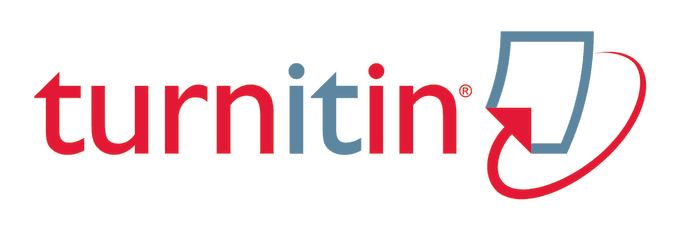Meaning of Corporate Advertising of PT. The Chevron “We Agree” On Television (Semiotic Analysis by Roland Barthes)
DOI:
https://doi.org/10.37535/103003120225Keywords:
Chevron, semiotics, Roland Barthes, ecology, mass mediaAbstract
Advertising can be said to have become one of the media to convey various messages aimed at certain people because of its broad nature and covering various groups because of the ease of access to view it. PT. Chevron, one of the companies engaged in the oil and gas sector, is also aware of the effects of one of these mass media. Therefore, PT. Chevron also uses advertising media to display its corporate advertisement version of “We Agree” which in 2016 was broadcast through various television media. This study uses a qualitative method with a semiotic approach by Roland Barthes as a tool for analyzing various signs so as to form denotative, connotative and mythical meanings contained in the advertisement. This analysis also criticizes a dilemma faced by companies related to ecology. In Roland Barthes' semiotic perspective, the researcher found various meanings contained in the advertisement, namely Chevron gives a picture of progress in a society, namely if that civilization has various tall buildings that tower as a form of progress of the times, even though several other countries have proven that reforestation is also is one of the markers of the progress of a society. However, this does not change the fact that Chevron is a company that contributes to the economy and human empowerment which then makes Chevron one of the foreign companies in Indonesia that also pays attention to the development of the Indonesian State.
References
Argenti, P. A. 2010. Komunikasi Korporat. Jakarta: Salemba Humanika
Barthes, R. 1985. L’aventure Semiologiqué. Terjemahan S. A. Herwinarko. 2007. Petualangan Semiologi. Yogyakarta: Pustaka Pelajar.
Belch, GE dan M.A Belch. 2004. Advertising and Integrated Brand Promotion: An Integrated Marketing Communications Perspective. New York: McGraw Hill/Irwin.
Bignell, J. 1997. Media Semiotics: An Introduction. Manchester: Manchester University Press.
Creswell, J. W. 2008. Research Design: Qualitative, Quantitative and Mixed Methods Approaches. Third Edition. Sage Publication. California. Terjemahan A. Fawaid. 2010. Research Design: Pendekatan Kualitatif, Kuantitatif dan Mixed. Cetakan 1. Pustaka Pelajar: Yogyakarta.
Danesi, M. 2012. Pesan, Tanda, dan Makna. Yogyakarta: Jalasutra
Devito, J, A. 1997. Human Communication. New York: Harper Collin College Publisher.
Eco, U. 1976. A Theory of Semiotics. Indiana University Press. Terjemahan I. R. Muzir. 2009. Teori Semiotika (Signifikasi Komunikasi, Teori Kode, Serta Teori Produksi – Tanda). Bantul: Kreasi Wacana Offset.
Eriyanto. 2001. Analisis Wacana. Pengantar Analisis Teks Media. Yogyakarta: LKiS.
Fandy, T dan Gregorius C. 2005. Service, Quality, Satisfaction.
Yogyakarta: Andi Offset.
Garbett, T. F. 1981. Corporate Advertising: The What, The Why and The How. New York: McGraw-Hill.
Gora, Raditya. 2016. Representasi Perempuan dalam Iklan Televisi (Studi Analisis Semiotik Iklan Beng-Beng versi “Great Date). Semiotika: Jurnal Komunikasi. Vol 10, Nomor 1. Diakses pada tanggal 14 Juli 2017 pukul 18.00 WIB http://journal.ubm.ac.id/index.php/semiotika
Hoed, B. H. Semiotik & Dinamika Sosial Budaya. Depok: Komunitas Bambu.
Irawan dan Basu. S. 2000. Manajemen Pemasaran Modern. Yogyakarta. Liberty
Kountur, R. 2007. Metode Penelitian untuk Penulisan Skripsi dan Tesis. Jakarta: PPM.
Kriyantono, R. 2006. Teknik Praktis Riset Komunikasi. Jakarta: Kencana.
Kurniawan. 2001. Semiologi Roland Barthes. Magelang: Yayasan Indonesiatera.
Morrisan & Wardhany, Andy. 2009. Teori Komunikasi (Tentang Komunikatir, Pesan, Percakapan dan Hubungan). Bandung: Ghalia Indonesia.
Mulyana, D. 2004. Ilmu Komunikasi: Suatu Pengantar. Bandung: Remaja Rosda Karya
Neuman, L. W. 2000. Social Research Methods. 4th Edition. Allyn and Bacon.
Rakhmat, J. 2013. Psikologi Komunikasi. Bandung: PT. Remaja Rosdakarya
Ruslan, R. 2003. Metode Penelitian PR dan Komunikasi. Jakarta: PT. Raja Grafindo Persada
Sobur, A. 2013. Semiotika Komunikasi. Bandung: Remaja Rosda Karya.
Sobur, A. 2003. Psikologi umum. Bandung: Pustaka Setia.
Strinati, D. 1995. An Introduction to Theories of Popular Culture. New York: Routledge.
Sugiyono. 2009. Metode Penelitian Kuantitatif dan Kualitatif. Bandung: CV Alfabeta.
Wahyuningsih, Sri. 2014. Kearifan Budaya Lokal Madura sebagai Media Persuasif (Analisis Semiotika Komunikasi Roland Barthes dalam Iklan Samsung Galaxy versi Gading dan Giselle di Pulau Madura). Jurnal Sosio Didaktika. Vol. 1, Nomor 2. Diakses pada tanggal 14 Juli 2017 pukul 18.00 WIB. http://journal.uinjkt.ac.id/index.php/SOSIO-FITK/article/view/1259
Walgito, Bimo. 2010. Pengantar Psikologi Umum. Yogyakarta: CV. Andi Offset.
Downloads
Published
Issue
Section
License
Copyright (c) 2022 Ruwianti Dian Permatasari

This work is licensed under a Creative Commons Attribution 4.0 International License.
Copyright rules apply for the articles that are featured in COMMENTATE: Journal of Communication Management
- COMMENTATE: Journal of Communication Management holds the right to be the first to publish the article.
- Authors will still be the copyright holder for their articles published on COMMENTATE: Journal of Communication Management and can use it freely as long as it does not violate the rules.
- Papers featured on COMMENTATE: Journal of Communication Management are under the Creative Commons Attribution 4.0 International License. Further details can be access on Open Access Policy.









